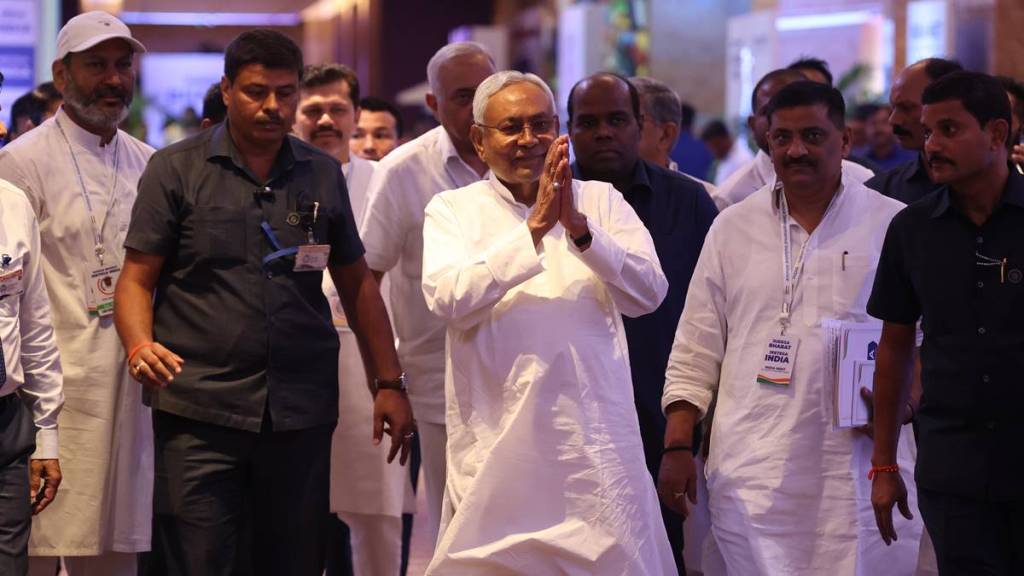Bihar Chief Minister Nitish Kumar is back in action. Less than six months after being sidelined by the Congress as its leader Rahul Gandhi became the centre of attention for all INDIA matters, the Janata Dal (United) leader, a man who has built its politics on the plank of social justice alongside the likes of Lalu Prasad Yadav, sprang back to the spotlight with the release of a report of the caste-based survey in Bihar.
The report, which puts the population of Other Backward Classes and Extremely Backward Classes (EBCs) in the state at 63 per cent, strengthens Nitish’s position not just within the INDIA bloc, but also within his constituents, a vote base he has personally cultivated through the years.
Also Read: Bihar caste census 2023 report: 63% Other Backward Classes, 16% population in General category
As per the survey, Bihar’s current population stands at 13,07,25,310, of which OBCs are 3,54,63,936 (27%) and EBCs are 4,70,80,514 (36%) while the general category population, or the “forward” castes, constitute only 15.52 per cent.
In his first term as Chief Minister, Nitish carved out the political constituencies of EBCs and Mahadalits minus the Paswans to compensate for the poor numbers of Kurmis, the caste he belongs to. As per the latest survey, Kurmis constitute a meagre 3 per cent of the population. After a decade of reaping the political dividends of this social engineering, Nitish gradually saw his social base dwindling again.
The release of the caste survey data, however, puts Nitish back on solid footing – one that he can use to keep his flock together and also emerge as the champion of their rights and bolster his image in the state, and nationally.
Also Read: Nitish Kumar calls all-party meet to discuss Bihar caste census results
The caste census has been one of the biggest political planks for Nitish for over a year now when he meticulously pushed through following his switch to the Mahagathbandhan and the RJD. Both Lalu Yadav and Nitish have used the cause of “social justice” to build their political capital in the Mandal era. The caste census gives them a fresh shot at a return to glory.
However, Nitish can use the caste census data to get a leg up over his own alliance partner in the Bihar electoral arithmetic. Past elections have shown that Nitish’s own standing, and that of his party, have dwindled in Bihar.
Despite the BJP-JD(U) combine emerging as the winner in the last Assembly elections, the tally of Nitish’s party fell to 43 from 71 constituencies in the 2015 elections, establishing the BJP as the senior partner with 74 seats. The same holds true within the Mahagathbandhan government with the RJD with 75 MLAs, with Nitish being the CM with far fewer seats than its partner.
Given the size of the population that OBCs and EBCs collectively form, no political party — including the BJP — can afford to ignore them. Much of Prime Minister Narendra Modi’s success in the Lok Sabha elections in 2019 has also been credited to his OBC-centric political approach. Non-Yadav OBCs have formed a big chunk of BJP’s voters in the Lok Sabha elections in 2019 as well as the Uttar Pradesh Assembly elections earlier this year.
The INDIA bloc parties themselves have made a beeline demanding a caste census in their respective states. Sharad Pawar’s NCP has demanded it in Maharashtra and Akhilesh Yadav of the Samajwadi Party has sought so in Uttar Pradesh. With elections in five states due in the next two months, Nitish Kumar’s move to announce the release of caste census data does put him in a commanding position wherever this issue is talked about.
It has been reported that Nitish pushed the INDIA alliance leaders to demand a pan-India caste census. The Congress, which has been late to realise the potential of OBC politics, is only taking a leaf out of Nitish Kumar’s book. And so is the Opposition.


